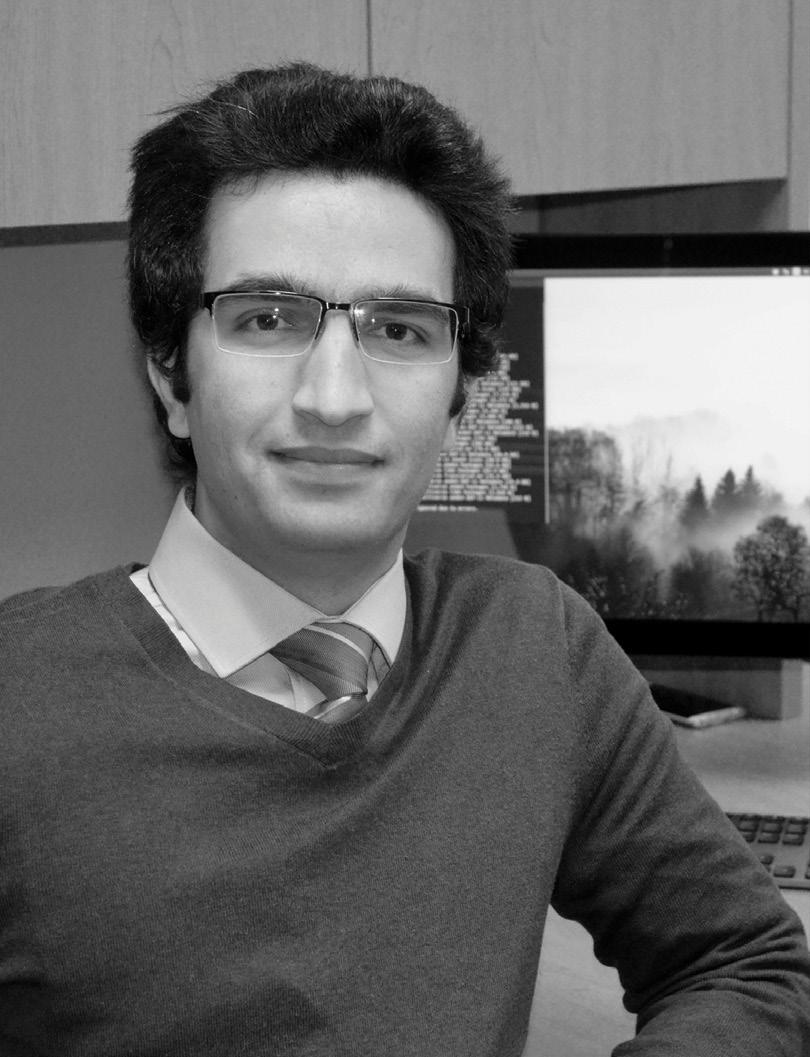
3 minute read
A Deeper Dive
UW professor, research team examine variables raising vulnerability to COVID-19
Fred Rogers once said, “When I was a boy and I would see scary things in the news, my mother would say to me, ‘Look for the helpers. You will always find people who are helping.’”
In the thick of the COVID-19 pandemic, it’s safe to say there were helpers all around. Whether the impact was small or large, overt or covert, there were many people willing to help. Without these helpers, it’s hard to say where we would be in the pandemic.
Pejman Tahmasebi, an assistant professor of petroleum engineering and civil engineering at the University of Wyoming, can easily be defined as a helper during the virus’ outbreak. Tahmasebi wondered how he could use his expertise and skill set as an academic to help others during this uncertain time.
“Most of the things that we do in my field are geology, civil engineering, water, or energy. At the same time, though, we are always dealing with big data,” he said.
Big data is just what it sounds like— an extremely high volume of often complex data that cannot be analyzed in the same way traditional, smaller sets of information can.
“For us, big data is not something new, and we have a lot of techniques that can be used to analyze complex data and extract meaningful patterns. So, given that knowledge and what we do in our field, we can look at COVID-19 and see it as a problem that an be interpreted as big data,” Tahmasebi said.
Knowing there was something he could do to help, Tahmasebi turned to ongoing research. At the time, he noticed that most research surrounding COVID-19 dealt with actionable and controllable factors that could suppress the spread of the virus, such as staying home, wearing a mask and socially distancing.
While these factors are important for keeping ourselves and others safe and healthy, current research “greatly ignored some pre-existing factors that can also have a great impact on COVID-19,” he said.
Tahmasebi and his team focused on 12 pre-existing health, environmental and economic variables that could influence one’s vulnerability to COVID-19. Some of the variables used in the study included obesity, diabetes, individuals aged 65 and over, CO2 per capita emission and gross national income.
Every day, the research team would collect 14 countries’ COVID-19 data from reliable data sources such as World Health Organization, the World Bank and the Emission Database for Global Atmospheric Research of the European Commission. After data collection was complete, Tahmasebi analyzed it to explore any correlations that might exist between their variables and COVID-19 deaths.
The research team found that two of their variables rendered significant correlations—diabetes and individuals aged 65 and older. In other words, the research indicated individuals with diabetes or aged 65 and older are more susceptible to experiencing grave side effects of COVID-19, specifically death.
“We just wanted people to know that in addition to the controllable factors, such as socially distancing, pre-existing parameters that we have no control over are also important and can actually give us some warning,” he said. “For example, you cannot change the diabetic ratio in a place, but those people should be more careful and take extra precautions.”
Tahmasebi and his team published their work and results to an archive, which makes it free and accessible to anyone, anywhere. “We strongly believe that this information is something that should be accessible to everyone,” he said.
Tahmasebi and his team hope that with the research and findings being available to the public, individuals who identify with those parameters can take further necessary precaution on top of regular precautions such as wearing a mask and socially distancing.
“After we had published it, a few media sources overseas talked about our research and found it very interesting. When you see that reflection from society, you can say, ‘Ok, I think I’ve done something meaningful,’ and I’m pretty happy and proud of that,” he said.
So it’s true—helpers are everywhere. Sometimes they’re working the front lines, sometimes they’re behind the scenes and sometimes, if you’re lucky, they’re in the engineering college at the University of Wyoming conducting research that could potentially save lives.

COURTESY PHOTO







